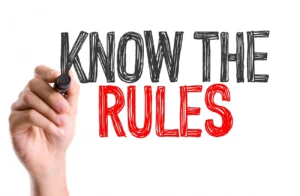 Part of an ongoing series of 5e Rules notes.
Part of an ongoing series of 5e Rules notes.
I grew up in the era where you always had a mage in the party who took Detect Magic to spot the glowy magic items, and then Identify to suss out what it is.
5e has simplified this a great deal, though much of the info is in the DMG (p. 136). There are several ways of getting at whether an item has magical properties and, if so, what they are:
- As the DMG says, the fastest and easiest way to reveal an item’s properties is with the Identify spell. Note that Identify can be done as a Ritual, so any wizard, bard, or cleric of divination can do it, taking 10 minutes and not burning a spell slot. If you don’t know the spell, then 10gp will hire someone (in an appropriate locale) to cast it for you.
- You can also focus on a magic item you are in physical contact with during a Short Rest. I usually require the characters to sort of wield the item more or less like they would — wear the boots, hold ring in your hand, wave the sword around a bit. At the end of the rest, you have learned the item’s properties and how to invoke them.
- You can also try to do an Intelligence (Arcana) check to see if something about the object can identify it (“The elves often put wings on the leather of Boots of Flying” or “That is the symbol for the Orcish God of Fire” or “Rings that chime with that particular note are most likely magic, from the lost realm of Midoria”). This is much quicker than the Short Rest option, but likely less complete. (Some suggestions on how this might work.)
- A little taste of a potion will tell the taster what it does, and probably won’t kill them.
- Alternately, you can guess from clues on the item itself, or can just start wielding it and figure out how it works.
Attunement
Some magical items require more than just identification and working instructions to invoke its magical powers. Instead, they are of sufficient power that they require a mystical bond be created between the wielder and the item called Attunement.
If an item requires this, it is listed with the item. Until such an item is Attuned, its magical properties do not manifest (an unattuned +3 Vorpal Sword is just a very cool looking normal sword in combat). Note that some items can have a prerequisite (e.g., class, race) for Attunement.
Attunement takes an additional Short Rest (beyond the initial identification), in physical contact and focusing on the item. Practice use of or meditation over the item might be helpful here. At the end of the rest, “the creature gains an intuitive understanding of how to activate any magical properties of the item, including any necessary command words.” More complex or powerful items may require additional Short Rests or presentation of circumstances where an ability manifests. (“You suddenly feel no fear of the flames, realizing they are not harming you but humming softly.”)
An item can be attuned to only one person at a time, and a person can only attune to three unique items at a time.
Attunement ends if prerequisites are no longer met, if the item is over 100 feet away for at least 24 hours, if the owner dies, or if another creature attunes to the item. You can also voluntarily drop an attunement with another Short Rest.
Spell-casting items
Items that allow spells to be cast are cast at the lowest possible spell and caster level, don’t expend any spell slots, and require no components (unless otherwise specified). Rules for range, casting time, duration, and concentration apply (again, unless otherwise specified).
For items that depend on the user’s spellcasting ability, if you don’t actually have a native spellcasting ability (e.g., a Rogue with Use Magic Device), the ability modifier is +0 but your Proficiency bonus does apply.

2 thoughts on “D&D 5e Rules – Magic Items: Investigating and Using!”